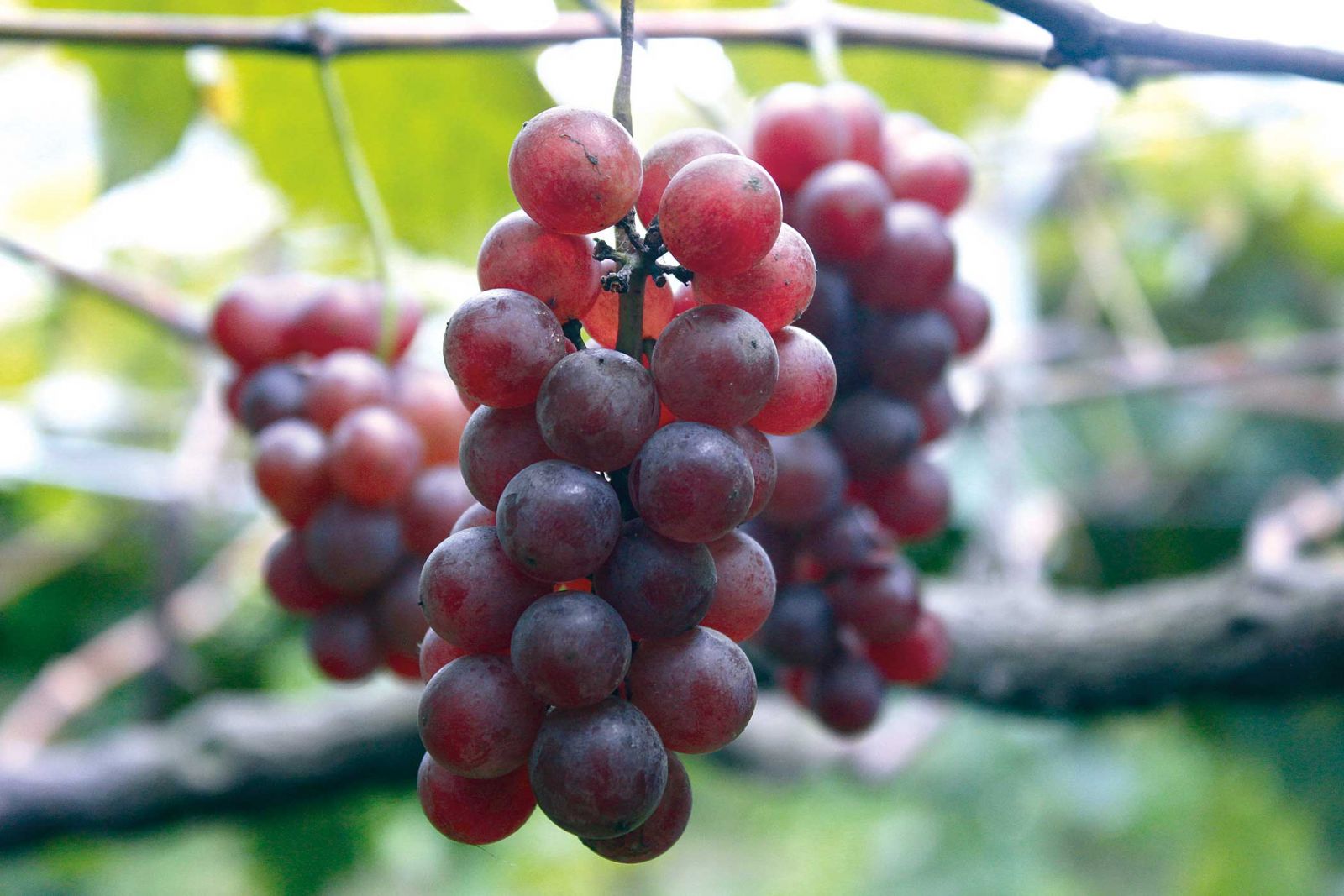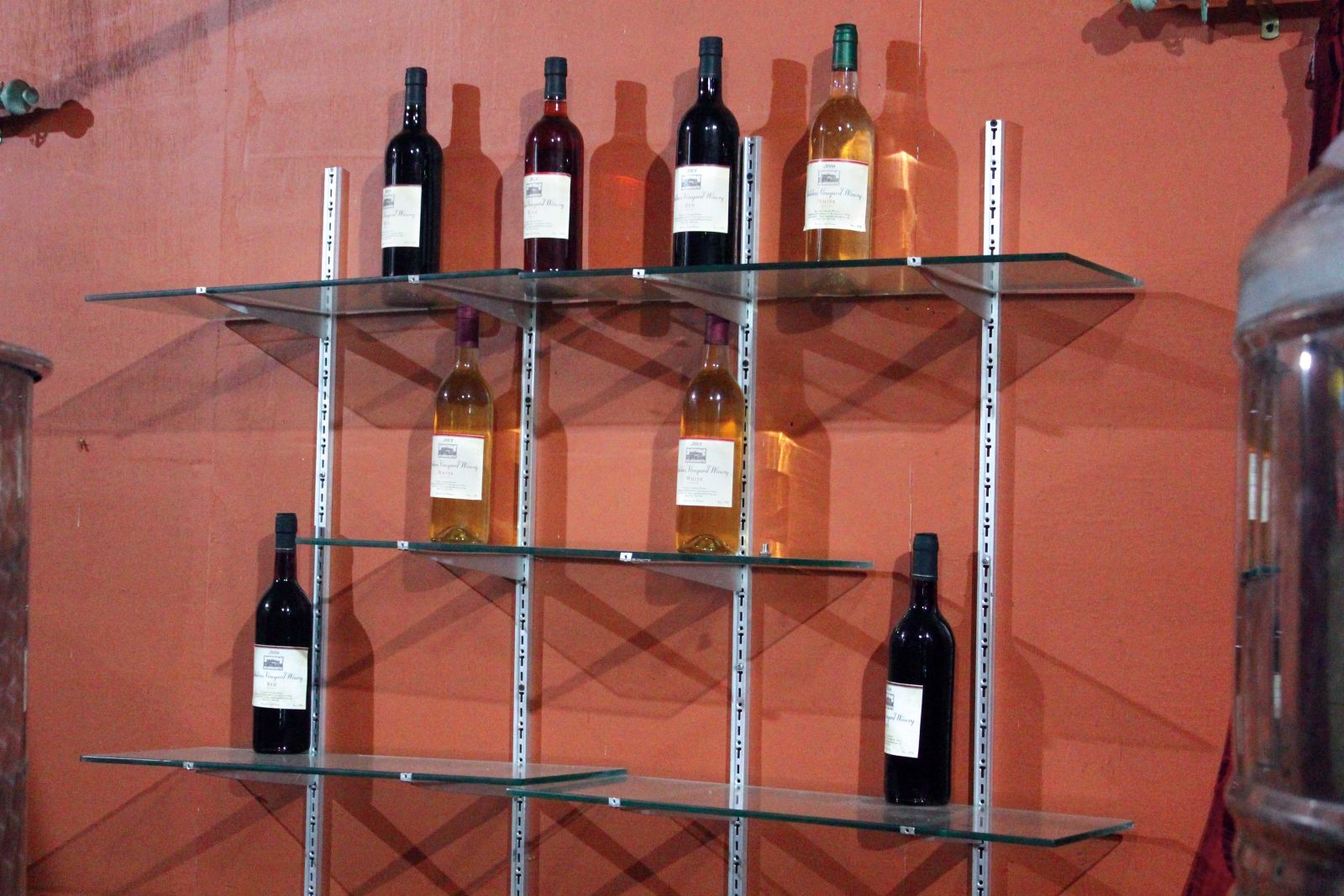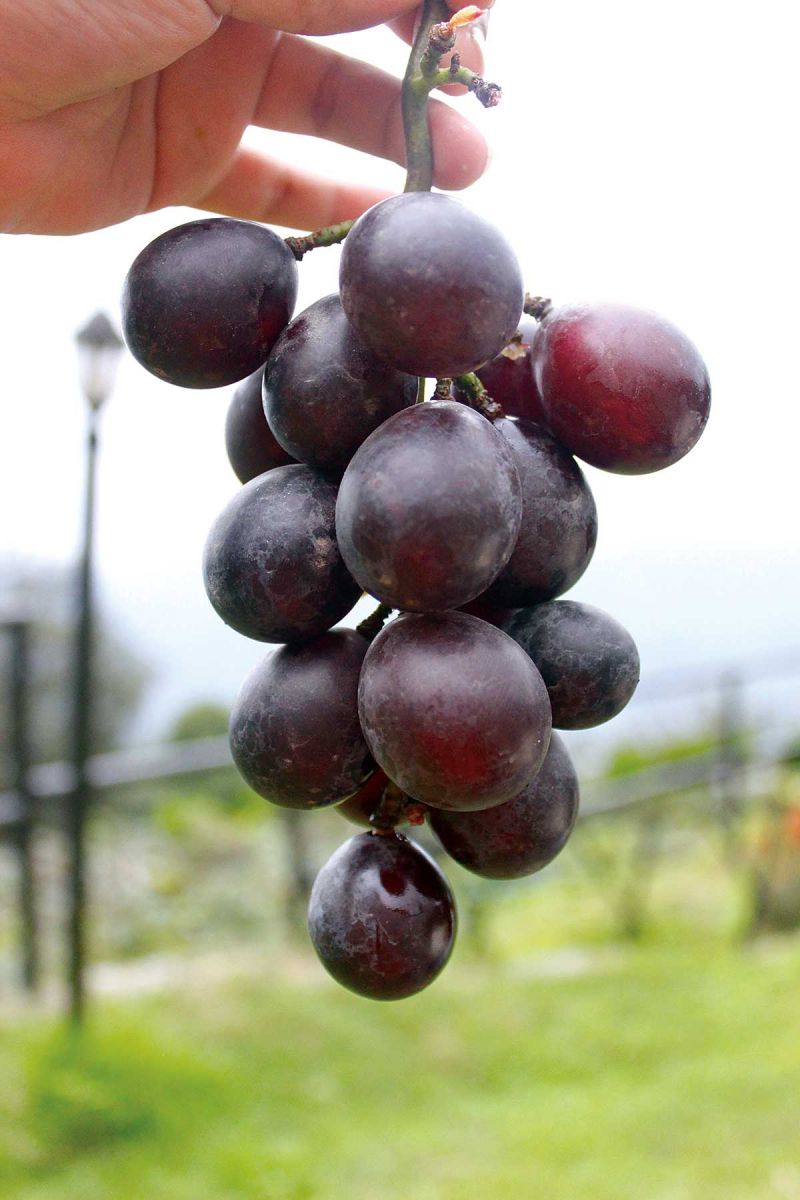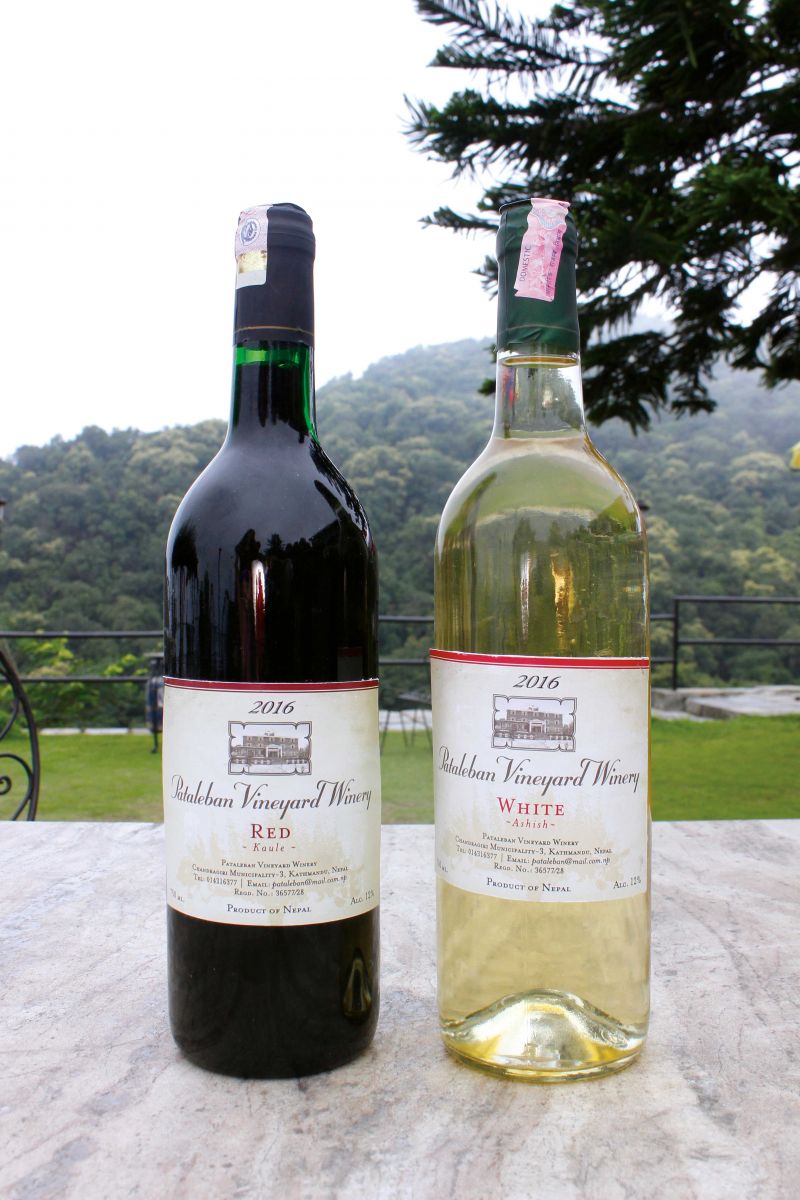 The city of dust had blinded us; the weights on our shoulders had morphed into mountain ranges. We desperately needed an escapade. That is how we found ourselves heading to Pataleban Vineyard Resort. Located on the outskirts of Kathmandu, near Nagdhunga, at an altitude of 1600 meter above sea-level, is this beautiful resort surrounded by an abundance of lush greenery of the community forest, ‘Pataleban’. The varying shades of thekafal, katus, and laliguranstrees, along with the cool breeze made us feel Zen the instance we reached there
The city of dust had blinded us; the weights on our shoulders had morphed into mountain ranges. We desperately needed an escapade. That is how we found ourselves heading to Pataleban Vineyard Resort. Located on the outskirts of Kathmandu, near Nagdhunga, at an altitude of 1600 meter above sea-level, is this beautiful resort surrounded by an abundance of lush greenery of the community forest, ‘Pataleban’. The varying shades of thekafal, katus, and laliguranstrees, along with the cool breeze made us feel Zen the instance we reached there
Our journey of one-and-half hour began with the tiring traffic of the Kathmandu valley. However, the magic started to unfold in about thirty minutes, when small cottages, cattle, and the striking shades of green fields came into view. It felt peaceful; the busy roads just behind us were no longer heard. It felt like we reached our destination in the blink of an eye, and the moment of realization was surreal. Standing tall atop the scenic terrain of Chisapani village sits Pataleban Vineyard Resort. As soon as we stepped inside the welcoming doors of the resort, all the fatigue and exhaustion of the week disappeared into thin air
We were welcomed by the bright and beautiful Bhawani, who led us to our room that had its name carved as Pinot Noir, a variety of grape wine available in the Pataleban vineyard. We were mildly fascinated by how all the rooms in this building are named after wines. Getting comfortable in the room was not an issue at all. The soft mattresses and the commanding views worked like magic. Out from the window, we could see the most beautiful pear tree, and out in the balcony, aside from the ancient-looking trees, the idyllic scenery of mountains was a sight for sore eyes.
It was when we were admiring the exquisite views of the forest that we met Mr. Janapal Thapa, the Executive Director of Banyan Tree Nepal Pvt. Ltd., the association that manages the resort. Almost a decade ago, inspired by the Japanese vineyards and wine culture, he got together with Mr. Kumar Karki to initiate a business with the unlikeliest of proposals—bring local tourists to experience an authentic getaway and the refined taste of Nepal-made wine. “When we first started, I talked to some of my friends, and the first question was, ‘Wait, there’s wine made in Nepal?’ and the second one was, ‘Is it far off from Kathmandu?’ says Mr. Thapa. Nevertheless, the two moved on with the idea of promoting sustainable agro-tourism and introducing wine culture in Nepal.

On our first afternoon there, we were led through a guided tour of the first-ever vineyard of Nepal. There, to our delight, we found ourselves fortunate enough to visit the Pataleban Vineyard Resort at the time of harvest; late July to mid-August. The heavenly smell filled our noses as we stepped in through the net. There were grapes of so many varieties like Cabernet Sauvignon, Merlot, Shiraz, Chardonnay, Solari, Sauvignon Blanc, Koshu, Pinot Noir, and Muscat Bailey. Reading about wine-making is fun, but actually witnessing the steps behind their making is what left us in awe. We got to eat two types of grapes, one that was used in making red wine, and another that was just for eating. When we took a bite, everything made sense; while the one used for making wine had a hint of bitterness, the other one was sweet and squishy.
The locally-trained workers were busy snipping the bunch of grapes, sorting the damaged fruit and filling their plastic buckets. We were especially excited about a worker who was wearing a T-shirt that had the word ‘feminist’ on it. We giggled with excitement, but we also wondered if he knew what it meant. Regardless, he was happy to let us take a picture of him. At harvest, while the grapes are just starting their new journey, wine-lovers descend to Pataleban Vineyard Resort from all over. It was astonishing to know that, until last year, they were producing 6000 bottles yearly, and now this year, the production has risen to 28,000 bottles.
Towards the end, we got to visit the wine cellar. The aroma of the wine from the bygone days was thick in the air. The wine production has shifted from the resort to its branches; Kewalpur Vineyard and Kaule Vineyard. Upon request, the resort provides the customers with a guided vineyard tour and wine-tasting program at the wine cellars at Kaule and Kewalpur. We were fascinated to know that they also conduct a walk in the community jungle, a hike to Indradaha, a pilgrim site, and sight-seeing trips toGorkha, Kathmandu, ChandragiriHills, and Dhading, and brings you a step closer to the Langtang Himal, Ganesh Himal, Manaslu, and Annapurna Himalayan ranges.
Another remarkable thing we got to know about this resort was how conscious they are. To start with, they harvest rainwater to use it in the vineyard later. They also use solar energy to power the entire resort. They do have generators, but they avoid its usage as much as they can. They produce water source for the village, as well. They also practice locavorism by serving organic and local food itemslike dhindo,prepared from millet, buckwheat, and potatoes and other vegetables. We were filled with gratitude knowing that we could indulge without guilt.
Once we concluded the tour, we took a moment to relax under the pear tree, eating the grapes and taking pictures of each other. The view was remarkable in itself, but we were so drawn to the tree. By using ropes, they made the tree take an umbrella-like shape.

 Then, came the wine tasting. Served with some delicious and memorable meals, every opened bottle seemed like it held a different story. At the bar, sitting on the dark leather couches, we sipped the crisp and fruity Nepal-made wines and ate a light supper of sizzler momo and spaghetti. The white wine had more of Chardonnay mixed with a few other white grape varieties, whereas rosé is made out of Pinot Noir and FujimiNori grapes. The red wine was our favorite, which is created from Khainori, a hybrid variety crafted from Pinot Noir and Khaiji grapes. When the talk and laughter trailed off, we headed back to our room. We then indulged in a hearty Thakali set dinner delivered to our room, and turned in for the night with our minds at peace.
Then, came the wine tasting. Served with some delicious and memorable meals, every opened bottle seemed like it held a different story. At the bar, sitting on the dark leather couches, we sipped the crisp and fruity Nepal-made wines and ate a light supper of sizzler momo and spaghetti. The white wine had more of Chardonnay mixed with a few other white grape varieties, whereas rosé is made out of Pinot Noir and FujimiNori grapes. The red wine was our favorite, which is created from Khainori, a hybrid variety crafted from Pinot Noir and Khaiji grapes. When the talk and laughter trailed off, we headed back to our room. We then indulged in a hearty Thakali set dinner delivered to our room, and turned in for the night with our minds at peace.
The next morning, we woke up refreshed; the sounds of nature, the woods whistling, and the birds chirping made us feel mellow. The rise of the mountains was even clearer than the day before. There, we could feel the longer arcs of our lives, however exhausting and wonderful, how brief this episode of life would be. We felt so in-tune with ourselves; even though we did not reach a complete serenity, we experienced a feeling very close to it.Breakfast was thus a silent affair. We sat in the restaurant, a very cozy spot, enjoying eggs, pancakes, and potatoes, served with freshly madefruit juice, and watched the world go by. We took our time to enjoy each bite; we were filled with gratitude.
The resort is a haven for those who crave for quality time in a fresh environment; it is an awe-inspiring place that jolted us out of the stress of endless to-do lists and into a state of wonder, a getaway that helped us in our far-flung lives to reconnect with each other and ourselves.









